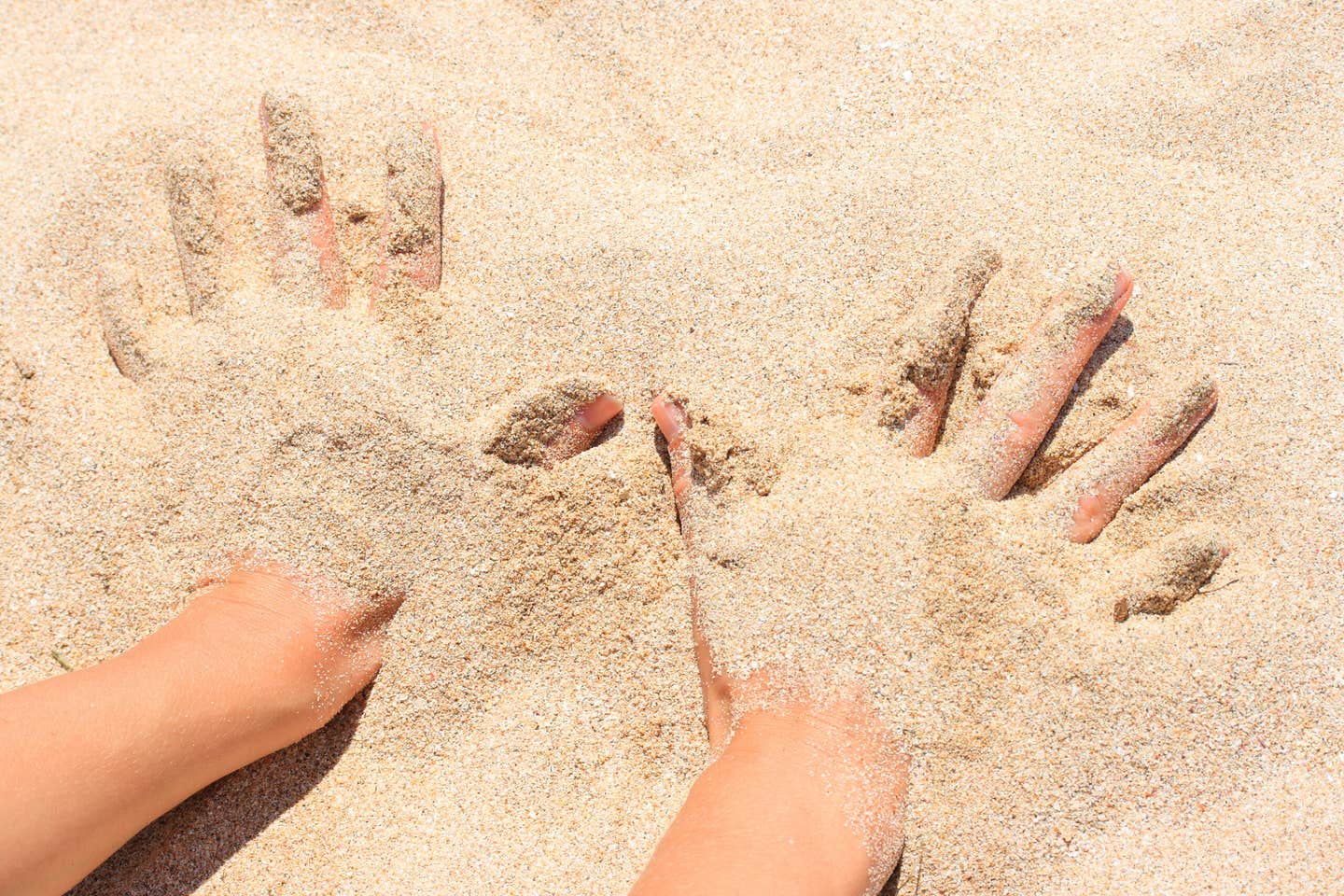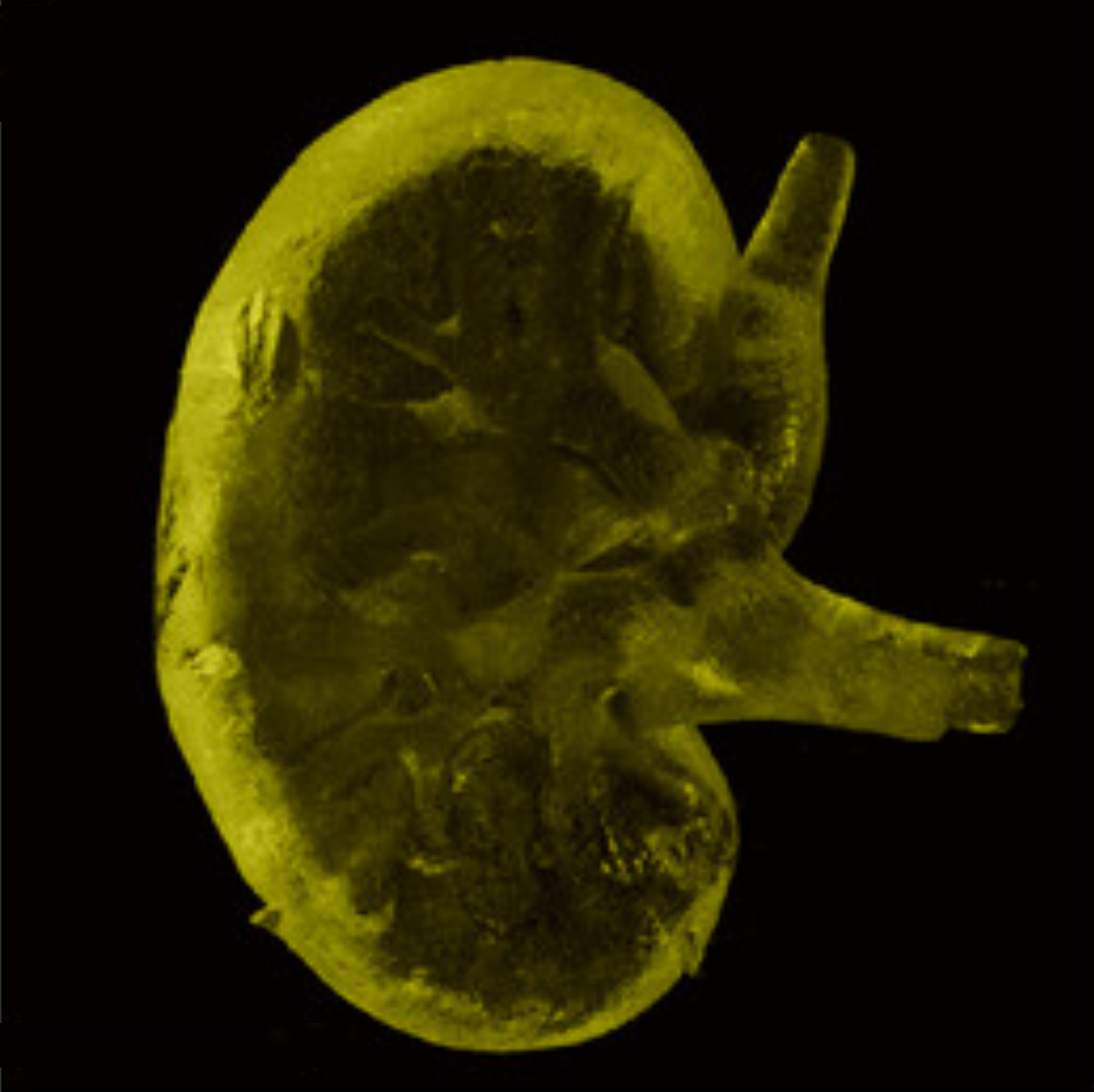Humans possess a ‘seventh sense’ called remote touch, study finds
New research shows humans can sense buried objects through sand, offering clues for advanced robotics and safer exploration.

 Edited By: Joseph Shavit
Edited By: Joseph Shavit

A new study reveals that you can sense objects buried in sand before touching them. (CREDIT: Shutterstock)
A simple finger drag through sand does not seem like much, yet a new set of studies from researchers at Queen Mary University of London and University College London shows that this quiet motion reveals a surprising sensory talent.
You have the ability to feel objects buried beneath loose grains long before you make contact. This sense is subtle, almost hidden, but powerful enough to shift how you think about touch, robotics, and the boundary between what can and cannot be perceived when sight fails.
A Hidden Sense Reveals Itself
Touch is often thought of as something that works only when your skin meets something solid. But many animals use a more extended form of touch. Shorebirds like sandpipers and plovers rely on faint feedback through wet sand to find food their eyes never see. Scientists wondered if people might have a touch-based reach that is usually overlooked. The idea sounds strange until you consider how often you rely on tiny pressure changes for everyday tasks, from gauging the softness of ripe fruit to sensing a pebble inside a shoe.
To test this idea, researchers asked twelve volunteers between 18 and 26 years old to move a single finger through dry sand inside long covered boxes. Their fingers moved at a steady two centimeters per second, guided by a strip of blinking LEDs that showed exactly how fast to go. Each box held a five centimeter plastic cube hidden somewhere along a track more than one meter long. Participants pushed their index fingers into the sand through a narrow slot and kept going until something felt “off.”
Even though the cube sat out of sight, your fingertip would likely have responded to the same tiny disturbances the study participants felt. The sand grains shifted differently near the buried object and created a narrow zone of gentle resistance far ahead of the cube. These changes are not obvious. They behave like ripples in a crowded stream, hard to see but still present. Before each trial, participants practiced touching the cube directly to make sure finger depth stayed consistent. On average, they inserted their fingers about 4.8 centimeters into the sand.
What the Numbers Show
Across 216 human trials, the findings were clear. Participants detected real buried objects 79 times without touching them, made contact-based discoveries 35 times, recorded 30 false positives, and correctly reported “no object” in 58 trials. When researchers analyzed the results with signal detection theory, they found an average sensitivity score of d′ = 1.1973, a level far above chance. The response bias score, c = –0.112, showed that participants were not simply guessing.
Most people sensed the cube about 2.7 centimeters before reaching it. While this number falls short of the theoretical maximum range of 6.9 centimeters predicted by granular physics, it matches what you would expect in messy, shifting sand. Despite the natural variation of fingertip motion, human precision reached more than 70 percent.
These findings suggest that you have a type of remote touch hidden within everyday experience. As Elisabetta Versace of Queen Mary University of London explained, this is the first time such a sense has been tested in humans. She said the work “changes our conception of the perceptual world” by showing that your awareness stretches farther than surface contact alone.
A Robotic Finger Learns the Same Task
To understand how human sensitivity compares with engineered capability, the team built a robotic counterpart. A UR5 robotic arm moved a custom fingertip with four sensors shaped to measure forces in three directions. The entire assembly matched the size of a human finger. The robot traveled through sand at the same speed as the volunteers and completed 120 trials, including 20 with no object present.
Researchers trained five machine learning models using Long Short-Term Memory networks. Each model used a different detection threshold, from three to eleven centimeters, to decide when an object was present. The lowest threshold produced the most balanced results. At that point, the robot detected real objects in every trial and avoided false alarms 90 percent of the time. Its precision reached 91 percent, a value higher than any human score.
Models with broader thresholds sensed objects from farther distances but made many more mistakes. At higher thresholds, precision dropped to zero because the algorithm treated regular sand movement as proof of an object.
Median detection distances showed a clear relationship between threshold and reach: 2.46 centimeters for the lowest threshold, 4.43 centimeters for the five centimeter model, and up to 12.94 centimeters for the largest threshold. But early detection came at a cost. The robot often “felt” things that were not there.
What These Comparisons Mean
The strongest comparison came from matching the human data with the robot’s seven centimeter model. Both reached similar maximum ranges, hovering near the predicted limit of sand physics.
You can see the differences, though, in how each system behaved. People detected real objects with steady accuracy and produced fewer false positives. You are naturally cautious when evidence is thin, especially when you cannot see what lies ahead. The robot, on the other hand, responded sharply to the faintest force changes. This made it extremely sensitive but also more likely to misinterpret noise as a signal.
Lorenzo Jamone of University College London said the two systems guided each other. He noted that the design of the robotic study came from the human results, and the robot’s detailed data helped researchers reinterpret the human findings. This collaboration showed how psychology, robotics, and artificial intelligence build on one another.
Zhengqi Chen, a PhD student involved in the robotic work, said the discovery opens doors for assistive technologies that help people sense beyond their natural limits. These tools could let you explore granular terrain, find lost items in rubble, or examine fragile soils without damage.
Practical Implications of the Research
This research could transform how you interact with places where vision fails. Robots that feel through sand could support archaeological digs by identifying objects before a brush ever touches them. Search and rescue teams could use touch-based robots to detect buried hazards or missing people after disasters.
Planetary missions could rely on tactile sensing to explore layered soils on Mars or icy moons where visibility is low and surface texture is unpredictable.
By studying how your sense of touch works in these extreme environments, engineers can design tools and machines that keep people safer while expanding the reach of human perception.
Research findings are available online in the journal IEEE Xplore.
Related Stories
- New study reveals how the sixth sense really works
- AI revolution: Researchers teach everyday objects to sense, think, and move
- What you smell is influenced by your other senses, study finds
Like these kind of feel good stories? Get The Brighter Side of News' newsletter.
Mac Oliveau
Science & Technology Writer
Mac Oliveau is a Los Angeles–based science and technology journalist for The Brighter Side of News, an online publication focused on uplifting, transformative stories from around the globe. Passionate about spotlighting groundbreaking discoveries and innovations, Mac covers a broad spectrum of topics—from medical breakthroughs and artificial intelligence to green tech and archeology. With a talent for making complex science clear and compelling, they connect readers to the advancements shaping a brighter, more hopeful future.



